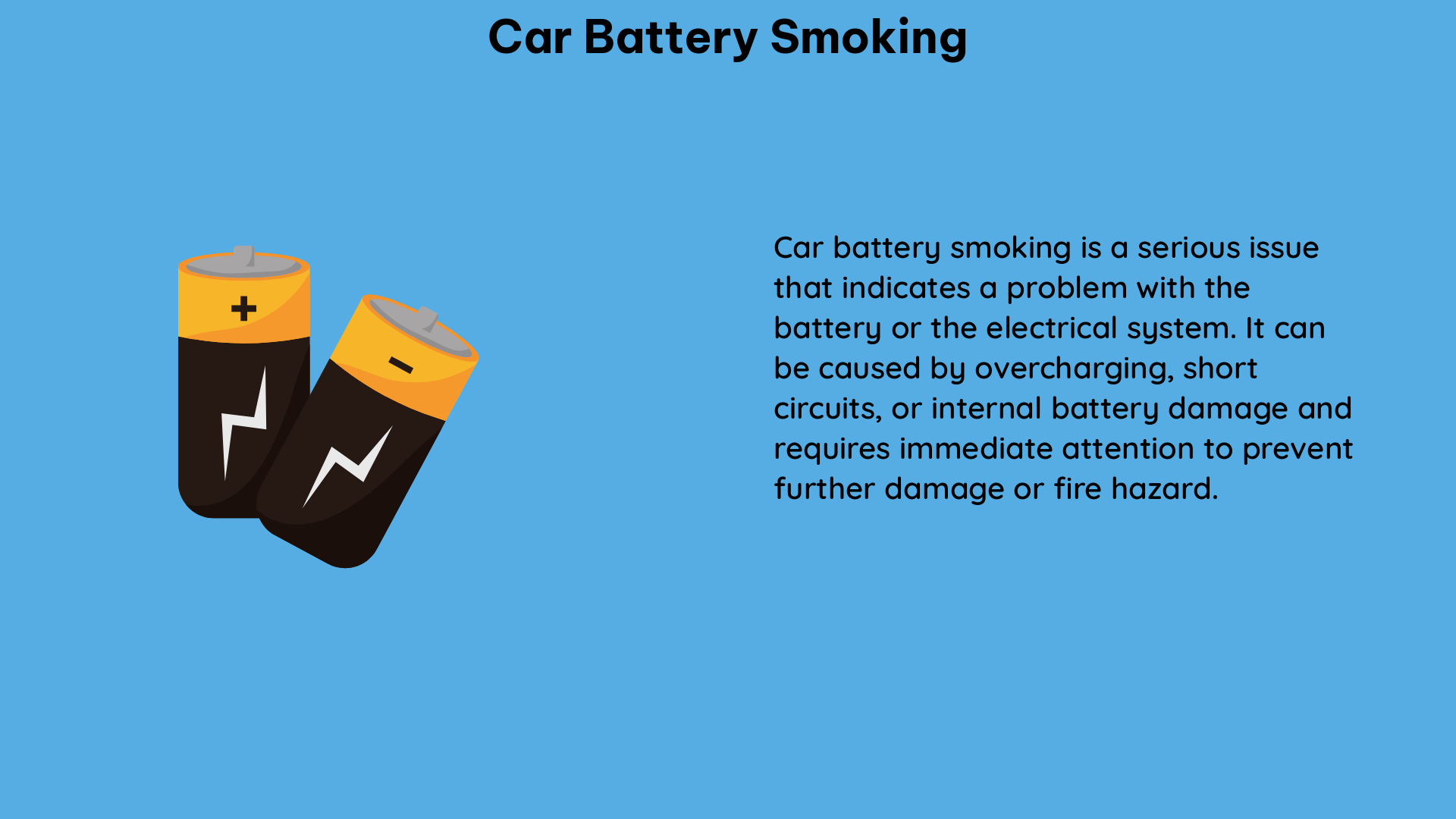Car battery smoking is a serious issue that requires immediate attention. The smoke is usually a result of excessive heat and overcharging, which can cause the battery to vent toxic and flammable gases. Overcharging can occur due to a faulty vehicle charging system, most often an alternator, or an improperly regulated battery charger. The gases vented by overcharged batteries are both flammable and toxic, posing a significant risk of explosion or fire.
Measuring the Severity of Car Battery Smoking
To measure the severity of the issue, several quantifiable data points can be considered:
Battery Voltage
The voltage of the battery can be measured to determine if it is overcharged. A typical alternator output should be in the range of about 13.7-14.7 volts, which can be measured directly at the battery terminals while the vehicle is running. If the alternator is overcharging a battery, it can vent, just like it would if it were being overcharged by a battery charger.
| Voltage Range | Condition |
|---|---|
| 13.7-14.7 volts | Normal alternator output |
| Above 14.7 volts | Overcharging |
| Below 13.7 volts | Undercharging |
Battery Temperature
Another quantifiable data point is the temperature of the battery. If the battery gets hot to the touch during the charging process, charging should be discontinued immediately to prevent permanent damage. When a battery is discharged below 12.4 volts, sulfation begins to form, which diminishes capacity and lifespan and makes it harder for the battery to accept and deliver current.
| Battery Temperature | Condition |
|---|---|
| Room temperature | Normal |
| Warm to the touch | Overcharging |
| Hot to the touch | Severe overcharging, immediate action required |
Sulfation
Sulfation is a common issue that can occur when a battery is discharged below 12.4 volts. This process diminishes the battery’s capacity and lifespan, making it harder for the battery to accept and deliver current. Sulfation can also contribute to the formation of gases, leading to battery smoking.
| Voltage | Sulfation Level |
|---|---|
| Above 12.4 volts | No sulfation |
| Below 12.4 volts | Sulfation begins to form |
| Below 11.9 volts | Severe sulfation, battery may need replacement |
Preventing and Resolving Car Battery Smoking

To prevent and resolve car battery smoking, several steps can be taken:
-
Check the Alternator: Ensure that the alternator is functioning correctly and not overcharging the battery. Use a voltmeter to measure the alternator’s output voltage while the vehicle is running.
-
Use a Properly Regulated Charger: If using a battery charger, make sure it is properly regulated and designed to prevent overcharging. Microprocessor-controlled chargers are recommended as they can automatically adjust the charging rate to prevent overcharging.
-
Monitor Battery Temperature: Regularly check the battery temperature during the charging process. If the battery becomes hot to the touch, discontinue charging immediately and investigate the cause.
-
Maintain Battery Charge Level: Avoid letting the battery discharge below 12.4 volts, as this can lead to sulfation and make the battery more susceptible to overcharging and smoking.
-
Replace Damaged Batteries: If the battery is severely damaged or the smoking persists, it may need to be replaced to prevent further issues and ensure the safety of the vehicle.
-
Ventilate the Area: If the battery is smoking, immediately open the vehicle’s hood or move the vehicle to a well-ventilated area to prevent the buildup of flammable and toxic gases.
-
Avoid Sparks and Flames: Do not attempt to work on a smoking battery, as the gases can be highly flammable. Keep any potential ignition sources, such as cigarettes or open flames, away from the area.
-
Wear Protective Gear: When dealing with a smoking battery, wear protective gear such as gloves, goggles, and a face mask to avoid exposure to the toxic gases.
By following these steps and monitoring the key data points, you can effectively identify and resolve car battery smoking issues, ensuring the safety and longevity of your vehicle’s electrical system.
References:
- Why Is My Battery Smoking?
- Quizlet: STAT 12 Flash Cards
- Smoke Coming Off Battery: What Do I Do?
- Battery University: How to Prolong Lithium-based Batteries
- Car and Driver: How to Properly Charge a Car Battery

The lambdageeks.com Core SME Team is a group of experienced subject matter experts from diverse scientific and technical fields including Physics, Chemistry, Technology,Electronics & Electrical Engineering, Automotive, Mechanical Engineering. Our team collaborates to create high-quality, well-researched articles on a wide range of science and technology topics for the lambdageeks.com website.
All Our Senior SME are having more than 7 Years of experience in the respective fields . They are either Working Industry Professionals or assocaited With different Universities. Refer Our Authors Page to get to know About our Core SMEs.